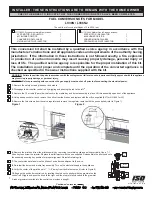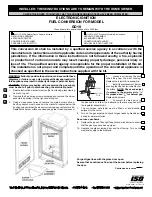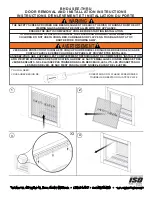
ICP
FORCE SENSOR OPERATION MANUAL
1
1.0 INTRODUCTION
ICP
force sensors incorporate a built-in MOSFET
microelectronic amplifier. This serves to convert the high
impedance charge output into a low impedance voltage signal
for analysis or recording. ICP
sensors, are powered from a
separate constant current source, operate over long ordinary
coaxial or ribbon cable without signal degradation. The low
impedance voltage signal is not affected by triboelectric cable
noise or environmental contaminants.
Figure 1 - ICP
Sensor System Schematic
Power to operate ICP
sensors is generally in the form of a low
cost, 24-27 VDC, 2-20 mA constant current supply.
Figure 1
schematically illustrates a typical ICP
sensor system. PCB
offers a number of AC or battery-powered, single or multi-
channel power/signal conditioners, with or without gain
capabilities for use with force sensors. In addition, many data
acquisition systems now incorporate constant current power for
directly powering ICP
sensors. Because static calibration or
quasi-static short-term response lasting up to a few seconds is
often required, PCB manufactures signal conditioners that
provide DC coupling.
Figure 2
summarizes a complete 2-wire
ICP
system configuration.
Figure 2 Typical ICP
Sensor System
In addition to ease of operation, ICP
force sensors offer
significant advantages over charge mode types. Because of the
low impedance output and solid-state, hermetic construction,
ICP
force sensors are well suited for continuous, unattended
force monitoring in harsh factory environments. Also, ICP
sensor cost-per-channel is substantially lower, since they
operate through standard, low-cost coaxial cable, and do not
require expensive charge amplifiers.
Refer to the installation/outline drawing and specification sheet
at the back of this manual for details and dimensions of the
particular sensor model number(s) purchased
. The following
pages give a brief description of the various sensor series
available, recommended mounting procedures, operation and
recommended calibration.
In addition to PCB’s line of ICP® sensors, each ICP® sensor
series outlined has corresponding charge output versions.
Charge mode versions with high output impedance are suited
for higher temperature, metal-to-metal and very high shock
applications. These models can also be used for applications
where it is desirable to manually set the output range.
In addition to standard products, PCB has the ability to design
and manufacture custom sensors/systems for specific
applications.
If questions arise regarding the operation or characteristics of
the force sensor products as outlined in this manual, feel free to
contact an experienced PCB applications engineer toll-free at
1-800-828-8840.
2.0 DESCRIPTION
IMPACT
Series 200 Impact Sensors are designed to measure
compression and impact forces from a fraction of a lb(N) to
50,000 lbs (to 22.4 kN). The flat sensing surface located on the
top of the sensor is designed to measure a dynamic force
quickly applied axially to the sensor.
As highlighted in
Figure 3
compression forces directed against
the sensing surface produce a positive-going output. A tensile
output could be obtained if a static, steady-state load were
applied to the sensor. The maximum tensile output to be
measured would be that of the applied static, steady state load
as that load is quickly removed.
This force-directed input and corresponding output will
provide a positive going output signal in ICP
models and a
negative going output in charge mode sensors. If desired,
adding the prefix
“
N
”
to a model number upon order, sometimes
desired for charge mode models, will indicate polarity reversal.
Summary of Contents for M209C11
Page 17: ......



































